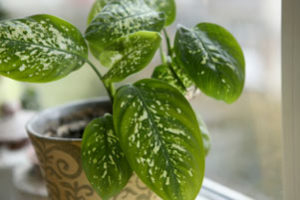The EPA tells us that, on average, indoor air is twice as polluted as outdoor air. The more airtight your home, the more likely it is to trap indoor pollutants. Think about it: a tightly sealed house lets very little in or out, including these common airborne contaminants: dust, dust mites, bacteria, pesticides, formaldehyde, smoking and cleaning byproducts, pollen, and many more.

While there are numerous ways to combat the effects of indoor air pollution, those that often get overlooked are certain types of household plants. In addition to thriving on the very substances that cause or aggravate problems with allergies, asthma, and other upper respiratory ailments, house plans also provide:
- Added beauty
- A new or expanded hobby that helps fend off depression and provides other health benefits, as well
Which types of houseplants are best suited to cleaning up the air you breathe? You’ll want to talk to your florist, especially regarding ongoing care, but you can’t go wrong with any of the following:
- Arrowhead Vine
- Boston Fern
- Chinese Evergreen
- Croton
- Dumb Cane
- Peace Lily
- Philodendron
- Pothos
- Spider Plant
As helpful as they are, house plants are not a cure all for polluted indoor air. Regular dusting and vacuuming with a HEPA filter, having family members leave their shoes by your entry door, cleaning or replacing your HVAC filters on a regular basis – these are all additional ways to promote cleaner indoor air.
At Pann Home Services, we offer whole-house indoor air quality solutions, with one or more just right for your home and family. A whole-house air filter, for example, can trap over 99% of airborne pollutants as they pass through your ducts. Ultraviolet lights are more aggressive as they seek and destroy household contaminants wherever they might be.
To learn more or request a free indoor air quality consultation, contact Pann Home Services today.









